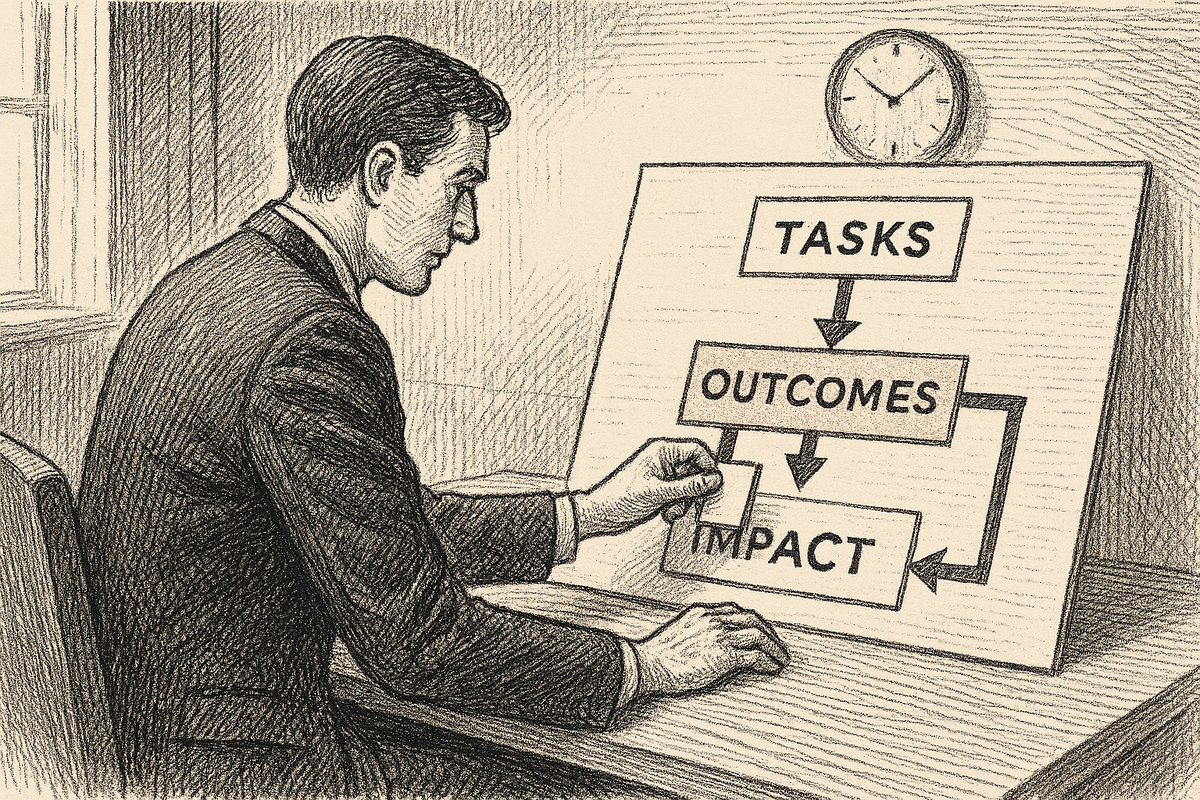Why We Work Overtime Without a Promotion in Sight: The Psychology Behind Silent Strivers
What drives professionals to keep showing up, even without a raise or promotion? This article explores the psychology of silent strivers—and why invisible effort may be the strongest signal of future leadership.
The Effort That No One Asks For—But Everyone Relies On
You’ve likely seen it, or maybe even lived it: the colleague who answers emails late into the night, quietly picks up the pieces when a project goes sideways, or takes initiative on tasks no one else volunteers for. These are the people who consistently over-deliver—not for praise or position, but because they see excellence as part of who they are.
They’re not guaranteed a promotion. They haven’t been promised a raise. In some cases, they may not even receive acknowledgment.
And yet, they keep showing up.
At first glance, this kind of behavior might be dismissed as overachievement, people-pleasing, or the residue of hustle culture. But in truth, there’s something deeper at play. For many high-performing professionals, effort is not just a means to an end. It’s a form of identity expression—a reflection of how they see themselves and how they want to be seen.
When Effort Becomes Identity
There’s a widespread belief that effort is always tied to reward. We’re conditioned to think that hard work should lead to recognition, compensation, or elevation. And while that’s sometimes true, it doesn’t fully explain why many professionals push themselves well beyond what’s required—without any certainty of advancement.
A 1997 study in the Journal of Research in Personality[1] found that individuals tend to view their work through one of three lenses: as a job, a career, or a calling. Those who see it as a calling are significantly more likely to exert discretionary effort—not because they’re chasing rewards, but because they view their contributions as a reflection of personal values and purpose.
When effort is tied to identity, it ceases to be transactional. These individuals don’t need praise to stay motivated. They need alignment. Showing up consistently, delivering with care, and taking pride in execution are simply part of who they are.
The Motivation Most People Miss
It’s easy to assume that performance is always linked to visible rewards. But high performers know that motivation doesn’t always come from bonuses, promotions, or recognition.
A 2002 meta-analysis published in Psychological Bulletin[2] demonstrated that intrinsic motivation—driven by autonomy, competence, and purpose—outperforms external incentives when it comes to sustaining long-term engagement and effectiveness.
This is particularly evident in mid-level leadership roles, where professionals are often entrusted with greater autonomy and strategic responsibilities. They’re not just executing tasks; they’re shaping outcomes. And when individuals are motivated by mastery, influence, or the belief that their work has meaning, they develop resilience that transcends short-term incentives.
In other words, they’re not working harder because they expect more. They’re working harder because they’ve found meaning in what they do.
Reputation Builds in the Background
One of the most common frustrations among high performers is the feeling of being overlooked. The promotion goes to someone else. The credit is misplaced. The visibility just isn’t there.
But what often goes unseen is that reputations aren’t built in bursts—they’re built in patterns. Managers and leaders tend to evaluate not just results, but behaviors: consistency, ownership, strategic foresight, and initiative.
A 2020 study in the Academy of Management Journal[3] found that employees who engaged in forward-looking, cross-functional work—particularly those initiatives not formally assigned—were significantly more likely to be promoted over time. These individuals weren’t necessarily the loudest in the room, but their behaviors sent a clear signal: they were already thinking and acting like leaders.
The Work That Doesn’t Show Up in KPIs
High-potential professionals often contribute in ways that don’t make it onto performance dashboards. They mentor peers, de-escalate conflicts, flag hidden risks, and create cohesion across silos. These discretionary behaviors aren’t tracked—but they’re noticed.
In fact, a 2003 study in Organizational Behavior and Human Decision Processes[4] found that such behaviors are strongly associated with perceptions of leadership readiness. Leaders remember who steps up without being asked. They trust those who consistently smooth friction and build bridges. These actions may not be formally recognized in quarterly reviews, but they’re factored into long-term decisions.
Over time, this type of work builds a different kind of capital—reputational capital—which often proves more powerful than short-term recognition.
When Loyalty Becomes a Limiter
There is, however, a risk: loyalty and consistency, when unaccompanied by strategic communication, can become a trap. Many high performers plateau not because they lack competence, but because they fail to frame their value in a way that others can understand and act on.
A 2022 article in Harvard Business Review[5] highlighted that top contributors often remain stagnant when their work isn’t connected to larger business narratives. They’re reliable, but not seen as visionary. They’re productive, but not perceived as strategic.
Without visibility and alignment, even the most impressive contributions can become invisible. Loyalty without leverage can reduce leadership potential to silent labor.
What Strategic Strivers Do Differently
The professionals who move from unnoticed to undeniable don’t just work harder—they work smarter. They align their contributions with strategic priorities. They accept high-impact assignments. They build credibility not just through delivery, but through storytelling.
These individuals know how to answer three critical questions:
- What changed as a result of your work?
- Why did it matter?
- How did it advance the business?
They don’t self-promote in the traditional sense, but they do make sure their value is legible. They don’t wait to be discovered—they show up as leaders before the title arrives.
Your Work Might Be the Interview
If you’ve ever found yourself wondering whether anyone notices your extra effort, the answer is: maybe not yet. But that doesn’t mean it isn’t working.
Leadership isn’t always about visibility. It’s about patterns. And many of the leaders we admire today weren’t tapped because they were loud—they were tapped because they were consistent.
Your effort is building something, even when it’s not acknowledged. Your work might be the quietest part of the room—but it might also be the clearest indicator of your readiness.
So keep showing up. But show up aligned. Because when ambition meets strategy, your title eventually catches up to your behavior.
- Journal of Research in Personality, 1997 — Jobs, careers, and callings: People’s relations to their work ↩︎
- Psychological Bulletin, 2002 — Rewards and intrinsic motivation: A meta-analysis ↩︎
- Academy of Management Journal, 2020 — Citizenship behaviors and long-term career outcomes ↩︎
- Organizational Behavior and Human Decision Processes, 2003 — Leadership assessments based on discretionary behavior ↩︎
- Harvard Business Review, 2022 — High performers aren’t always high potential: Here’s how to tell the difference ↩︎




